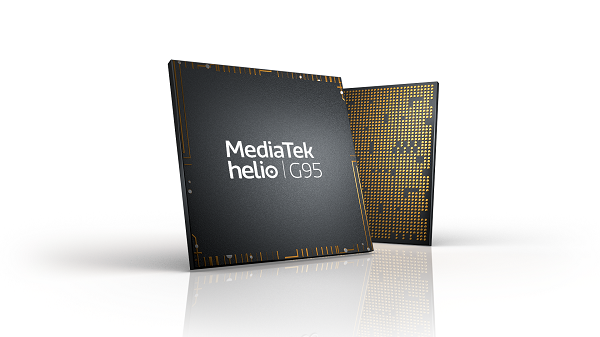MediaTek recently launched their flagship mobile processor aimed at high-end gaming, the MediaTek Helio G95. This the latest addition to the Helio G Series and features an enhanced MediaTek HyperEngine game technology, multi-camera support, and AI Super-Resolution for video stream.

Aimed mainly at the premium 4G gaming smartphone segment, the G95 will power major smartphone brands that will hit global markets in September. The Helios G95 offers gaming enthusiasts faster performance and high-end features like multi-camera support (up to 4 cameras) with a built-in AI processing unit. It provides dual wake-up word support and enables HDR10 display, which can be enhanced to approach HDR10+ quality in real-time.
The smartphone gaming segment shows sustained growth, with device makers keen on offering newer, more advanced technologies to gaming enthusiasts. MediaTek continues to enhance its G series gaming chips to deliver robust performance and MediaTek Helio G95 is our most powerful gaming chip to date.
Said Dr. Yenchi Lee, Deputy General Manager, Wireless Communications Business Unit, MediaTek.
The Helio G95 incorporates a pair of ARM Cortex-A76 CPUs that can run up to 2.05GHz and 6 Cortex-A55 CPUs with an upgraded ARM Mali-g76 MC4 GPU. This chip includes support for dual wake-up word detection and also has an ultra-low power, always-on DSP.
MediaTek HyperEngine Game Technology
This feature is aimed to give hardcore gamers the best performance their device can deliver. It features networking, rapid response, picture quality and resource management enhancements for maximum performance during gameplay. If your Wi-Fi signal is weak, it will automatically trigger Wi-Fi & LTE concurrency, ensuring a smooth and lag-free connection anytime, anywhere.
AI Super Resolution Display
The Helios G95 is capable of offering an AI Super Resolution Display for higher quality video streaming from video calling to watching streaming services like Netflilx, Hotstar and Amazon Prime. It intelligently upscales videos from 360p to 720p resolution in real-time and can help reduce the network bandwidth by up to 75% without any perceptible difference in quality. It can also support FHD+ 90fps displays for lag-free gaming and responsive user interface.
Multi-Camera Support
This chip enables devices with an up to 64MP camera with quad-pixel technology for incredible low-light photos. It also supports depth engines for real-time portrait bokeh, AI face detection, video encoding and decoding at 4K 30fps, along with integrated APU (AI processing unit) for AI enhancements on your camera.


